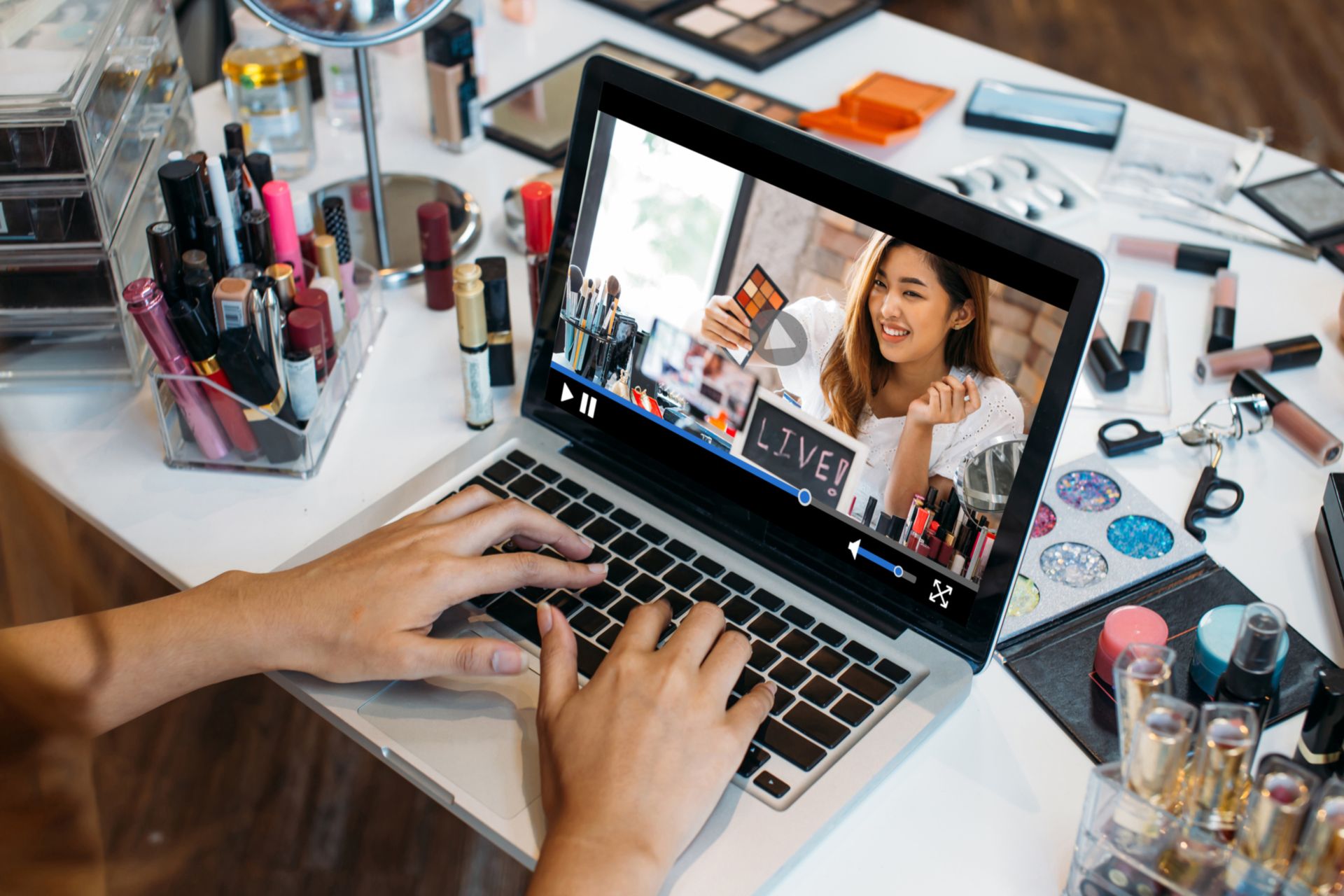The outbreak of COVID-19 has quickly spiraled into a wave of uncertainty and left many businesses wondering what steps to take to curb plummeting sales.
As marketers, many aspects of work scope have been reshuffled. This includes readjustment of: budget allocation, channels, mediums, campaigns, content and tone of voice. These, topped with work from home arrangements, have made it a challenge to be reactive at a time when adaptability is crucially needed.
Yes, this pop-up you had long planned to promote your spring collection will not take place, your PR event to present the new face of your brand will have to be postponed and your digital out of home (DOOH) ads to bring people to your offline stores will have to be suspended. Losses are already happening. Luxury duty-free retailer DFS, had to close all of its stores and postpone indefinitely the opening of its latest space in the historical and prestigious La Samaritaine building in Paris.
As dismal as this may sound, and although there is no single best way to deal with the downfalls of this pandemic, there are certainly best practices marketers can adopt to adjust their brand strategy to this new, unprecedented reality. Businesses that effectively harness insights and data to pivot their strategy during this pandemic, will stand a better chance of coming out on top of their competitors and ultimately capture new audiences and market shares.
Marketers must embrace cost-effective, creative and timely approaches to communicate relevant brand value propositions.
Not to spring too much theory on you but the new agora – or public sphere- as defined by Jurgen Habermas and Marshall McLuhan really is, by default, online. Because of safety measures including quarantines and work from home arrangements taken by governments and administrations across the globe, everything spanning from conversations, news, brand discovery, entertainment and leisure is now based off the internet.
We saw this first and foremost in China, where the virus forced a lockdown on public and private bodies in December 2019. Time spent online effectively shot up with users especially keen on short videos and livestreaming formats. Shorts video apps such as Douyin (TikTok being the western name) or Kwaishou substantially increased their active users – a 23% growth between February 2019 and February 2020 (Source: Warc). Riding on this trend, companies from western countries keen on capturing new audiences, have been offering free streaming and broadcasting services. In light of new restrictive measures announced in France, premium and privately owned channel, Canal+, offered two free weeks to the public. Meanwhile, the Paris Opera offered all of its ballets and opera performances via streaming on its official website. Similarly, American newspaper, New York Times is providing complimentary access to all news articles considered important and useful during this time.
Another effect the quarantine has had on online behaviour is the flourishing of e-commerce, whether it be in its classic forms or with the use of livestreaming. Although livestreams had been on the rise in the last couple of years in China particularly, with KOLs selling products ranging from vegetables at the market to the latest luxury lipstick on Little Red Book or Taobao, the effect of social isolation measures has resulted in a spike of online purchases. To second that, latest research from Ipsos showed that out of 12 countries surveyed, consumers in 11 of these said they had increasingly turned to online channels to purchase their products. This held particularly true for consumers in highly impacted countries such as China (51%) and Italy (31%). These statistics underline the needs for brands to shift their efforts to the online realm to capture the surge of time and users on the internet.
So, what measures can marketers effectively take to drive engagement and communicate effectively with consumers?
1.Pivot your marketing roadmap
Be reactive and proactive. As a marketer how fast you can shift your strategy to this new context will really make a difference in the short term and long term. Based on the product category you are working with (F&B, beauty, clothing), your business model and your market, reviewing your rebounding roadmap will be the first necessary step. This is a good time to pick-up on long term brand building strategies such as: developing your email journey strategy for your inactive user database or to reengage past customers having subscribed to your website but who have not purchased yet, or reviewing your content to optimize your targeting tactics.
Among internet users, 44% indicated spending more time on social media (Facebook, Instagram). Thus, redistributing your ad spend to appropriate channels and experimenting with audience segmentation and ad settings to harness these habits and capture users’ attention will enable you to collect insights and data about users you wouldn’t have usually reached or engaged with. Remember, people have more time than usual, some are even actively looking to discover new and exciting brand and products during this down time. Now is the time to be bold (as long as you A/B test).
2.Leverage your brand’s storytelling
Communicate carefully. As Charles Caleb Colton once said: “Silence is foolish if we are wise but wise if we are foolish”. It would be a mistake to remain silent in a time at which people’s attention is more available than ever. However, as a marketer, you must tread communication and content thoughtfully. Sure, people’s attention span is greater, but so is their sensitivity. Your storytelling should revolve around brand awareness, identity and entertainment without pretending as though everything is normal. Opt for the soft sell approach and avoid going for the hard sells as this may be perceived as aggressive or inappropriate. During this critical period – the last thing you want is to come off as insensitive and trigger controversy over your brand. Fashion and beauty conglomerate LVMH for example, has announced it will use some of its perfume factories to produce hand sanitizers to donate to health workers in France while Starbucks is offering free coffee in the United States for front-line COVID responders. The Blacksheep restaurant group in Hong Kong has been actively communicating on its social channels and via email to keep customers informed about health and safety measures put in place across their different establishments. Showing best–in–class customer service with caring, reassuring messages and flexibility (on delivery times, refunds, etc.) will be key to building future sales, continuous engagement, and long-term brand value. Airlines such as Delta, Cathay or Air France which usually imposed penalties for booking changes have all adapted their policies in response to this exceptional situation. Brands who stay relevant and top of mind once the pandemic is over will be those that made consumers feel better, safe and inspired.
3.Be innovative
Think outside the box. For brands that are experiencing a slowdown in activities, now is also a great time to implement and experiment new tools and train staff accordingly. These don’t have to be costly. Podcasts are a great example and unorthodox medium for some brands to reach new consumers. As of March 2020, a study by GlobalWebIndex showed that 12% of survey participants had been listening to more podcasts due to the coronavirus worldwide. Webinars or Masterclasses are another avenue you can explore as a digital touchpoint replacement for events and conferences even if your business is small. You can start off with free (but limited) tools such as IG lives or try monthly subscriptions on bigger platforms such as cloud-based Zoom conferencing operator. If your business relies mostly on consumer interactions, partnering with software companies to alleviate your business is also a solution you can investigate. Hong Kong based real estate software Property Raptor has been a rescuer for many realtors experiencing cancellations of home visits and tours due to people’s concerns of contracting the virus. The property tech CRM software’s latest March 2020 product release includes a map and satellite view feature that allows agents to easily visualize and filter search listings in surrounding areas to help close deals even from the comfort of your home. Marketers can leverage these opportunities to adopt digital customer centric communication which will help long term brand equity.
4.Reach out for collaborations
Sharing is caring. In times of difficulty is when stakeholders are seeking external solutions and collaborative outreach. This holds true for seeking collaboration opportunities with other brands but also with all third-party partners across the scope: logistics, PR agencies, e-commerce platforms, etc. Your clients and partners are directly impacted by your performance as a marketer, leverage this. One of China’s biggest e-commerce platforms, JingDong (JD) is a great showcase of the latter as they have just announced a “Spring Raindrop Plan” allocating funds up to 1.5 billion RMB to support brands most heavily impacted by the pandemic with perks such as membership premiums, content marketing and data analysis. Similarly, Alibaba also announced a plan to help offline brands get online as brick-and-mortar only business models suffered the most. If you are part of a marketing agency, reach out to your clients to start discussions about how each of your clients could help one another. This could be a spring special giveaway or a joint press feature or a Q&A featuring a different business owner during each session. If you are in-house, think about your partners.
Digital transformation and agility as a business imperative
Every crisis presents an opportunity for marketers to learn and to finetune their strategy to create long term brand building that will resonate with consumers and establish their brand’s position as the leading, trusted partner for consumers. Although dealing with the aftermath of COVID-19 will require stepping outside conventional ways of working and thinking, marketers ready to embrace and adapt to change will enable their brands to come out stronger.
Integrated Management Systems (IMS), is Asia’s leading digital transformation agency. Our multicultural team of digital experts (software engineers, marketers , project managers and data scientists) come together to specifically tackle and adapt real time to current business environments to help your brand mitigate risks, and make the most out of tricky situations such as the COVID outbreak we are currently experiencing. With multiple trailblazing offers, such as marketing to China, social listening, e-commerce and data visualization, we empower our clients, by delivering creative and cutting-edge alternatives and strategies outside traditional marketing and sales funnels.
Get in touch with our team to start the conversation.











